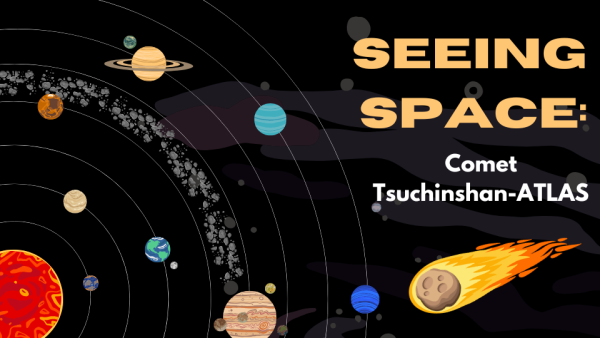The last time a comet could be seen above Earth with the naked eye was in 1997. This comet was called Hale-Bopp and was visible most noticeably in the northern hemisphere for eighteen months.
For the first time in twenty-seven years, a new comet bright enough to be seen with the naked eye has made an appearance. This comet is called Tsuchinshan-ATLAS.
The name Tsuchinshan-ATLAS is derived from the companies that originally discovered the comet. The Tsuchinshan Chinese Observatory (Purple Mountain Observatory of the Chinese Academy of Sciences), first documented the comet in January of 2023. However, the comet was formally discovered by the Asteroid Terrestrial-impact Last Alert System (ATLAS), on February 22nd, 2023. This has resulted in both companies being credited in the comet’s name. However, the comet is more commonly known by its shorter name, Comet A3.
Comet A3 is currently in the constellation Serpens, the snake constellation, at approximately 77 million kilometers from Earth as of Wednesday, October 16th. However, the comet will also be passing through several other constellations including the Ophiuchus constellation and the Virgo constellation as it passes by Earth’s horizon. It takes approximately four minutes and fifteen seconds for the sunlight reflected from Comet A3 surface to travel to Earth.
Comet A3 will be viewable until the end of October with the naked eye as it goes from a brightness magnitude of 1.7 to 3.9. This magnitude scale is based upon the total spread of light over the object. As the magnitude increases, the less visible the comet becomes to the eye. Plus, the human eye can only see objects under or at a 4.0 magnitude.
The best chances to spot this comet were from October 14th-20th. The comet will be the brightest during this time and closest to the Earth. Plus, not only can the comet itself be seen at this time, but the comet has also grown a cometary tail that can also be seen.
A cometary tail is ice particles on the comet’s surface interact with the sun’s heat and evaporate into a gas, which causes dust to be broken off of the comet. This results in a cloud of dust following the comet, which interacts and reflects the light from the sun to become visible to the human eye.
While a comet might not be the easiest thing to find in the night sky, there are plenty of apps available to download that are currently tracking Comet A3 and give tips on the best times and directions to view the comet from. It is suggested that curious viewers of the comet look into the sky around sunset in the western direction, where the comet should be visible from.
It isn’t often that a comet can be seen from Earth without the use of telescopes or other scientific instruments. While most people might not initially think of a comet as the most interesting object in the sky, I would still suggest taking the time to try and see it for yourself, because nobody knows when the next bright comet will appear.








